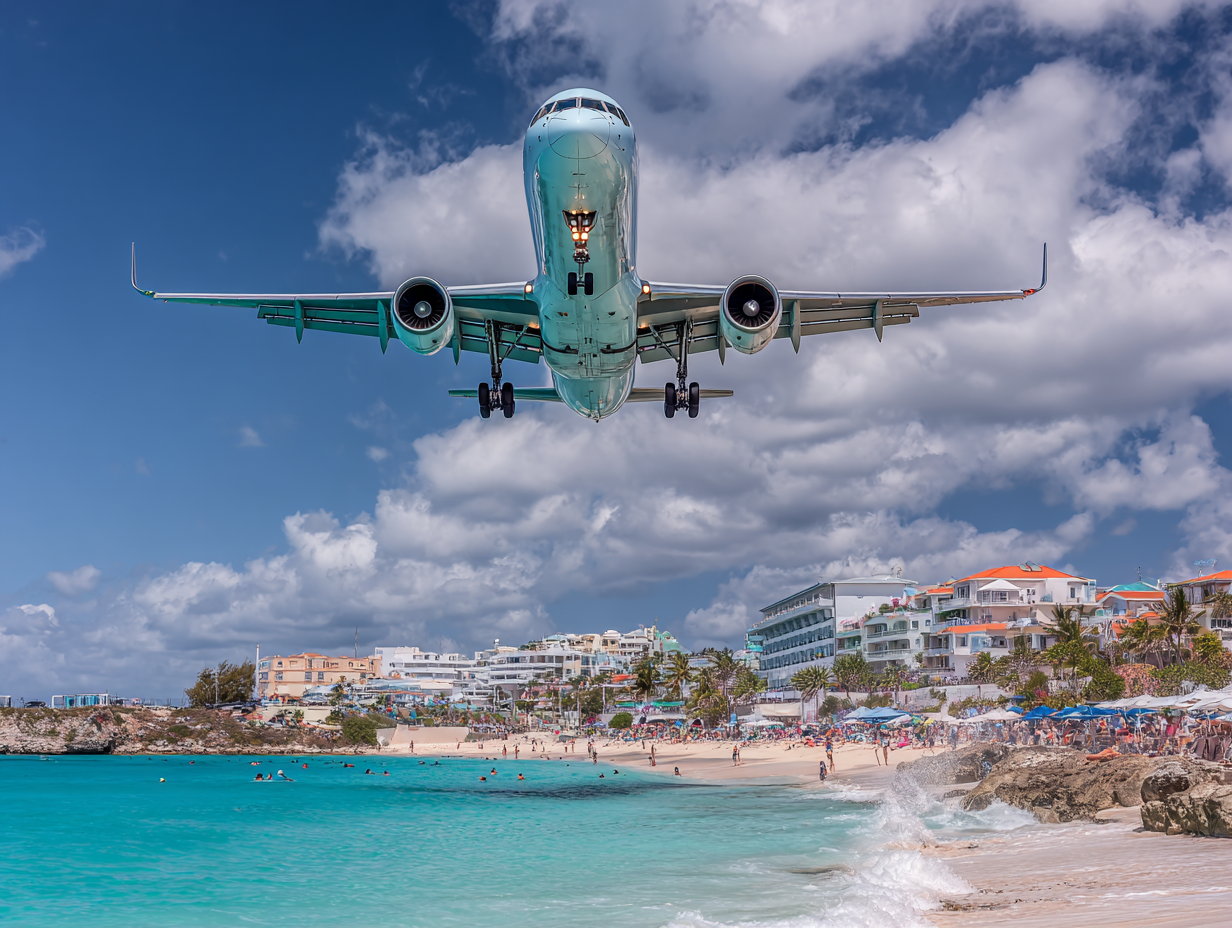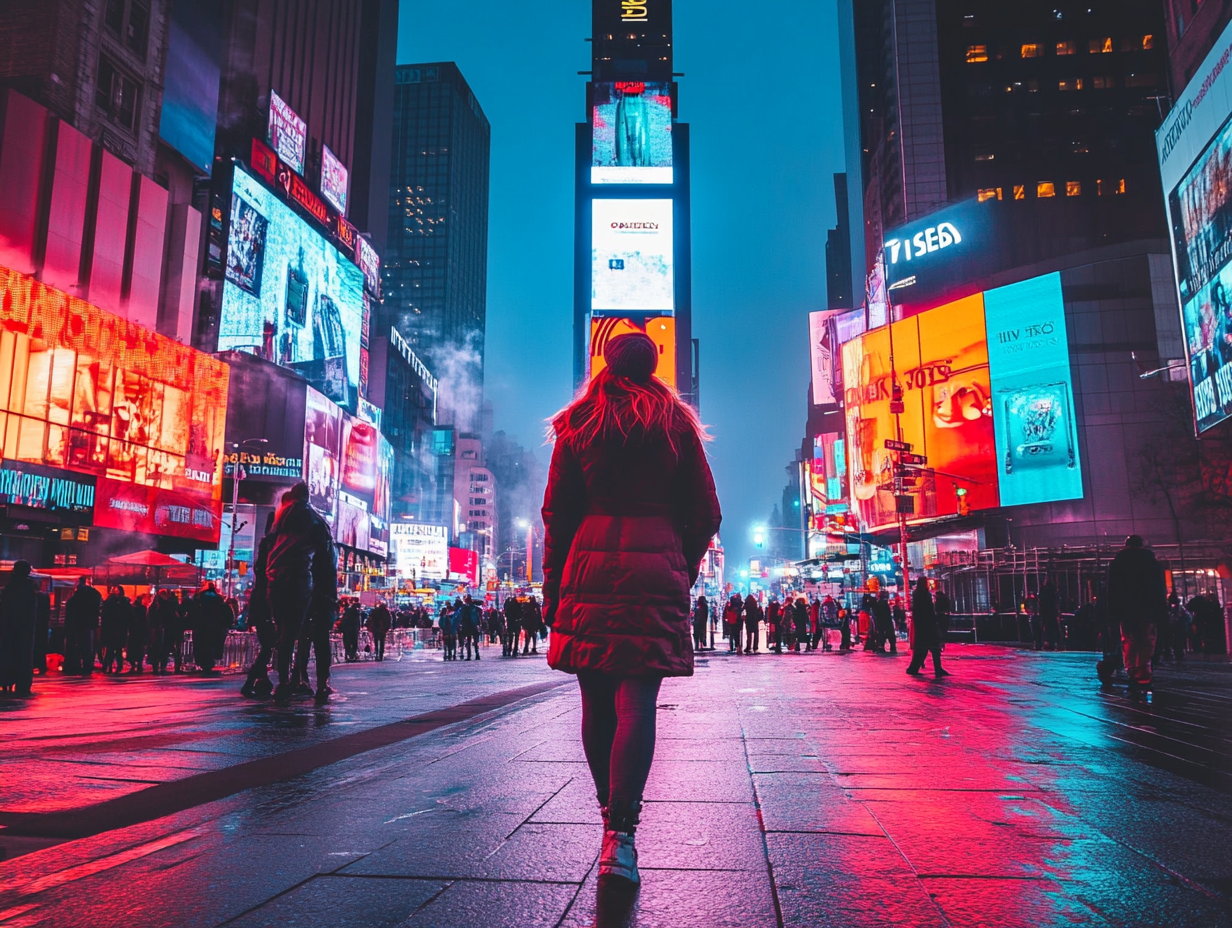We all love bringing back captivating travel stories—some for ourselves, others to share with those who couldn’t join the journey. Imagine recounting how your plane soared just meters above sunbathers before landing near a Caribbean beach, or how an airport sprawls larger than the city of Mumbai. These may sound like tall tales, but they’re absolutely true. Here are six extraordinary airports from around the world that not only push the boundaries of engineering but also stand as inspiring destinations in their own right.
1. Princess Juliana International Airport, Saint Martin
Located on the Caribbean island of Saint Martin, this airport is renowned for its jaw-dropping runway approach over Maho Beach. This airport probably has one of the most unique landings in the world. The runway starts just meters from the shoreline, forcing large aircraft to fly as low as 10-20 meters above beachgoers. Expect to see crowds gathering daily to witness landings and takeoffs.
2. Juancho E Yrausquin Airport, Saba
This airport has the world’s shortest commercial runway, measuring just 400 meters. Juancho E. Yrausquin Airport has steep cliffs on one side and the ocean on the other, and the runway leaves no margin for error, making it also one of the most dangerous and technically challenging airports for pilots. The setting is dramatic and the experience simply breathtaking. Only small propeller aircraft can land here.
3. Barra Airport, Scotland
Located on the remote island of Barra in Scotland’s Outer Hebrides, this is the only airport in the world where commercial flights land directly on a sandy beach. The beach is the runway! Interestingly, as all beaches do, this also also gets submerged twice daily by high tides. This means, flight schedules go as per tidal cycle. The airport primarily serves small propeller planes connecting Barra to mainland Scotland.
4. Williams Field, Antarctica
Williams Field, or Willy Field, is an extraordinary airport located near McMurdo Station in Antarctica. The airport is a critical lifeline for scientific research in one of the harshest environments on Earth. Williams Field airport’s runways are constructed entirely of compacted snow and ice, meticulously maintained to support heavy aircraft. What’s extreme about this airport, you ask? Imagine operating in temperatures that often drop below -30 degrees Celsius and 24-hour daylight or darkness.
5. Svalbard Airport, Longyearbyen, Norway
Svalbard Airport is just 1,300 kilometers from the North Pole, and holds the title of the world’s northernmost airport with scheduled commercial flights. The airport is built on permafrost, and is built to withstand extreme Arctic conditions, including polar nights.
6. King Fahd International Airport, Saudi Arabia
Located in Dammam, Saudi Arabia, King Fahd International Airport is the largest airport in the world by land area, sprawling across 78,000 hectares. The airport is larger than the city of Mumbai, Maharashtra, India. One of the most impressive features is the exclusive Royal Terminal, a luxurious facility reserved for the Saudi royal family, visiting dignitaries, and high-profile guests. King Fahd International Airport also has a mosque, big enough to accommodate 2,000 worshippers.



